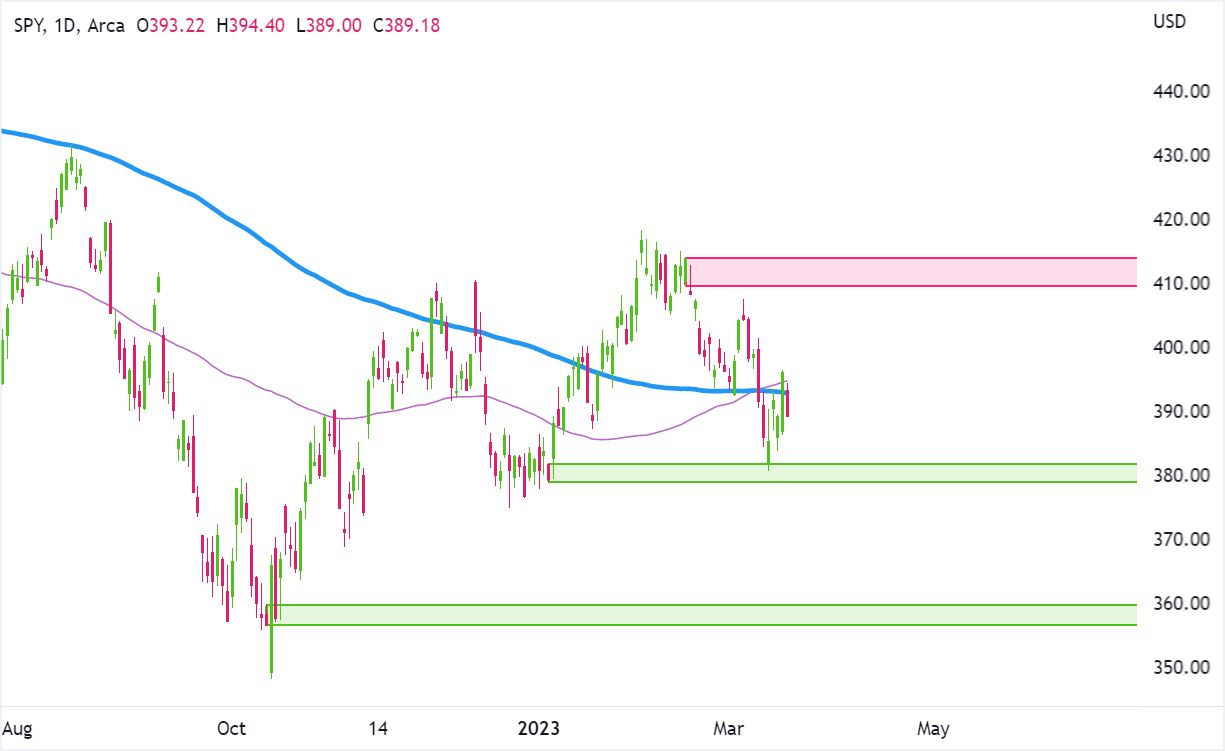Introduction
The tariff and lending policies implemented during the presidencies of Warren G. Harding and Calvin Coolidge had a significant impact on the world economy. These policies, which aimed to protect domestic industries and support economic growth, shaped international trade and influenced the economic fortunes of many nations.
Following World War I, the United States faced the challenge of reestablishing its economic strength and recovering from the devastating effects of the war. Both Harding and Coolidge believed in a policy of economic nationalism, which focused on boosting domestic industries and promoting American prosperity. Through the imposition of tariffs, they sought to protect American goods from foreign competition and encourage local production and consumption.
The tariff policies of Harding and Coolidge, commonly known as the Fordney-McCumber Tariff Act of 1922, significantly raised import duties on a wide range of products. While this move aimed to safeguard American industries, it also had far-reaching consequences for the global economy. It sparked retaliatory measures from other countries, leading to a decline in international trade and a rise in economic nationalism worldwide.
Additionally, the lending policies of the Harding and Coolidge administrations played a crucial role in shaping the world economy. In an effort to support post-war reconstruction and financial stability, they advocated for American loans to European nations. This approach aimed to alleviate the burden of war debts and stimulate economic growth in Europe. The most notable example of this lending policy was the Dawes Plan, which restructured Germany’s war reparations and facilitated loans to aid its economic recovery.
The effects of these policies on international trade and economic stability were significant. Europe, devastated by the war and burdened by war debts, relied heavily on American loans and struggled with the imposition of higher tariffs. The combination of protectionist trade policies and unsustainable borrowing eventually contributed to the global economic downturn known as the Great Depression.
In this article, we will delve deeper into the tariff and lending policies of Harding and Coolidge and explore their impact on the world economy. We will examine their effects on international trade, the responses of European countries to the tariffs, the consequences of the lending policies, and the connection between these policies and the onset of the Great Depression. By understanding the historical context and ramifications of these policies, we can gain valuable insights into the complexities of economic decision-making and their far-reaching consequences.
The Tariff Policies of Harding and Coolidge
Under the presidencies of Warren G. Harding and Calvin Coolidge, the United States enacted significant tariff policies with the aim of protecting domestic industries and stimulating economic growth. The Fordney-McCumber Tariff Act of 1922, signed into law during Harding’s administration, marked a significant increase in import duties across various products.
The tariff act sought to shield American industries from foreign competition and promote the consumption of domestically produced goods. By imposing higher tariffs, the government aimed to make imported goods more expensive, thereby encouraging consumers to buy American-made products. The underlying belief was that this would ultimately lead to increased production, job creation, and economic prosperity.
However, these tariff policies had far-reaching consequences for the global economy. Other countries retaliated by imposing their own higher tariffs, sparking a wave of protectionism. This increase in trade barriers resulted in a decline in international trade, which had a negative impact on economies across the world. The restrictive trade policies stifled economic growth, exacerbated global economic inequalities, and contributed to the overall economic instability of the era.
European countries, in particular, faced significant challenges due to the tariffs. Many European nations, still recovering from the devastation of World War I, relied on exports to generate revenue and stimulate economic growth. The higher tariffs imposed by the United States hindered their ability to access the lucrative American market. As a result, European goods faced greater obstacles and became less competitive, leading to decreased exports and economic downturns in these countries.
Conversely, some American industries benefited from the tariffs, particularly those in sectors that faced intense foreign competition. The higher import duties provided protection and allowed these industries to thrive. However, it is important to note that the benefits were not universal, as other sectors reliant on foreign markets or imports for production faced challenges and lost competitiveness.
The tariff policies of Harding and Coolidge were a reflection of the prevailing economic nationalism of the time, with a focus on protecting domestic industries and prioritizing American interests. While they aimed to boost the national economy, the unintended consequences of these policies had a significant impact on the world stage. The global increase in protectionism and the decline in international trade set the stage for the economic challenges that would follow, including the eventual onset of the Great Depression.
Impact on the World Economy
The tariff and lending policies of Harding and Coolidge had a profound impact on the world economy, with far-reaching consequences for international trade, economic stability, and global relations. These policies, driven by the economic nationalism of the time, significantly shaped the economic landscape of the 1920s and set the stage for the challenges that would follow.
The tariff policies, through the Fordney-McCumber Tariff Act of 1922, led to a rise in protectionism and a decline in international trade. As the United States imposed higher import duties, other countries retaliated with their own tariffs, creating a cycle of trade barriers. This hindered the flow of goods and services across borders, stifling economic growth and exacerbating the economic inequalities among nations.
The impact of these trade restrictions was particularly felt by European countries. Still recovering from the aftermath of World War I, many European nations relied heavily on exports to rebuild their economies. The higher tariffs imposed by the United States limited their access to the American market, impeding their export-led growth and exacerbating their economic challenges.
Additionally, the lending policies pursued by Harding and Coolidge aimed to support post-war reconstruction and financial stability. Through initiatives like the Dawes Plan, the United States provided loans to European nations, particularly Germany, to help them meet their war reparations and stimulate economic recovery. These loans, combined with American investments, helped temporarily stabilize European economies.
However, the lending policies created a web of interconnectedness between nations, which proved to be fragile. As the world economy became more interconnected, any economic disruptions in one country had a ripple effect that spread across the globe. This interdependence made the global economy susceptible to shocks, and when the United States experienced an economic downturn, it had severe consequences for the rest of the world.
The stock market crash of 1929 and the subsequent onset of the Great Depression can be partly attributed to the unintended consequences of Harding and Coolidge’s policies. The combination of restrictive trade policies and unsustainable borrowing practices created an economic environment that was vulnerable to a severe downturn. As the global economy collapsed, it further deepened the economic hardships faced by nations around the world.
In summary, the tariff and lending policies of Harding and Coolidge had a significant impact on the world economy. The imposition of higher tariffs led to a decline in international trade and exacerbated economic inequalities among nations. The lending policies, while initially providing short-term economic stability, created a fragile interdependence that amplified the effects of the subsequent Great Depression. The economic ramifications of these policies highlight the complexities of economic decision-making and the need for cautious, internationally coordinated approaches to foster global growth and stability.
Effects on International Trade
The tariff policies implemented during the presidencies of Warren G. Harding and Calvin Coolidge had significant effects on international trade, reshaping the dynamics of global commerce and impacting economies around the world. With the goal of protecting domestic industries and promoting economic growth, these policies had far-reaching consequences for international trade relations.
The Fordney-McCumber Tariff Act of 1922, signed into law during Harding’s administration, resulted in significantly higher import duties on various products. By making imported goods more expensive, the act aimed to encourage consumers to buy American-made products and stimulate domestic production. However, this policy led to a rise in protectionism, as other countries responded with their own tariffs, creating barriers to international trade.
The consequences of these tariffs were felt globally. European countries, in particular, heavily reliant on international trade to rebuild their economies after World War I, suffered the impact of higher trade barriers. The United States, as a major market, became more difficult for European exporters to access, leading to a decline in their exports and causing economic challenges for these nations.
Furthermore, the tariffs not only affected the volume of international trade but also altered its composition. As countries faced trade barriers in traditional markets, they diversified their trade relations, seeking new markets and partners. This shift in trade patterns resulted in the emergence of new trading alliances and the reconfiguration of global trade routes.
Another significant impact of the tariff policies was the rise of economic nationalism. The protectionist measures triggered a cycle of retaliatory tariffs, creating an atmosphere of distrust and competition among nations. This trend toward economic self-sufficiency and isolationism hindered the cooperation necessary for fostering global economic growth and stability.
It is important to note that the effects of these tariff policies were not limited to the 1920s. The consequences reverberated into the following decades, as countries continued to grapple with the challenges of protectionism and finding ways to navigate the changing dynamics of international trade. The impacts of these policies served as a lesson for future policymakers, highlighting the need for balanced and constructive approaches to international trade and cooperation.
In summary, the tariff policies of Harding and Coolidge had far-reaching effects on international trade. While aimed at protecting domestic industries and fostering economic growth, these measures resulted in the rise of protectionism, a decline in global trade, and the reshaping of trade relationships. The impacts of these policies extended beyond the 1920s and underscored the importance of fostering cooperation and open trade for sustainable economic growth.
European Countries and the Tariff
The tariff policies implemented by Warren G. Harding and Calvin Coolidge had significant implications for European countries, which were still grappling with post-war reconstruction and economic recovery. The imposition of higher import duties by the United States through the Fordney-McCumber Tariff Act of 1922 had a disproportionate impact on these nations, hindering their access to the American market and exacerbating their economic challenges.
European countries heavily relied on exports to generate revenue and stimulate economic growth. The higher tariffs imposed by the United States made it more difficult for European goods to compete in the American market, resulting in decreased exports and economic downturns in these countries. Many European industries, such as textiles and agriculture, were particularly vulnerable to the trade barriers, as they faced intense competition from American counterparts.
The impact of the tariffs was not limited to European exporters. Importing higher-cost American goods limited the purchasing power of European consumers, hindering their ability to buy a wide range of products. This reduction in consumer spending further contributed to economic challenges for European nations.
In response to the tariffs, European countries not only faced economic hardships but also began pursuing alternate trade relationships. Faced with limited access to the American market, they sought to diversify their trade partners and explore new markets. This shift in trade patterns led to the emergence of new trading alliances and the renegotiation of trade agreements, as European nations aimed to weather the challenges posed by the restrictive trade policies of the United States. These developments contributed to the reshaping of global trade relationships and the reconfiguration of economic dynamics.
It is worth noting that the tariffs imposed by the United States were not universally supported within the country. Some American industries, such as those reliant on imports for production or those with significant overseas investments, also faced challenges as a result of the policies. The higher costs of imported inputs impacted their competitiveness and ability to operate efficiently. Thus, the tariffs had mixed effects domestically as well.
The European response to the tariffs demonstrated the interconnectedness of the global economy and the ripple effects of economic policies across nations. The challenges faced by European countries served as a reminder of the need for international cooperation and coordinated efforts to foster economic growth and stability. As countries sought to navigate the shifting landscape of international trade, new alliances and partnerships were forged, marking a significant shift in the global economic order.
In summary, the tariff policies of Harding and Coolidge had a profound impact on European countries. The higher import duties hindered their access to the American market, resulting in economic downturns and a need to explore new trading relationships. European nations’ responses to the tariffs triggered a reconfiguration of global trade relationships and highlighted the interconnectedness of the global economy. These developments underscored the importance of international cooperation and coordinated efforts to navigate the challenges posed by restrictive trade policies.
The Lending Policies of Harding and Coolidge
In addition to their tariff policies, the presidencies of Warren G. Harding and Calvin Coolidge were marked by significant lending initiatives. These policies aimed to support post-war reconstruction and financial stability, particularly in Europe, and had a profound impact on the world economy. Under their leadership, the United States pursued lending programs and initiatives like the Dawes Plan, which sought to address war debts and facilitate loans to promote economic recovery.
The Dawes Plan, launched in 1924, was a prime example of the lending policies adopted by the United States. It aimed to alleviate the strain of war reparations on Germany by restructuring its payments and providing American loans to aid its economic recovery. The plan also encouraged private American banks to invest in German industries, stimulating economic growth and fostering stability in Europe.
The lending policies pursued by Harding and Coolidge were driven by the belief that financial stability, both domestically and internationally, was crucial for prosperity. The United States, as an emerging economic power, sought to promote economic interdependence and cooperation among nations through financial assistance and investment.
The effects of these lending policies were significant. European nations, burdened by war debts and the economic aftermath of World War I, heavily relied on American loans to rebuild their economies. The influx of capital helped stabilize these nations in the short term, allowing them to meet their financial obligations and stimulate economic growth.
However, the lending policies also fostered a web of economic interconnectedness that proved to be fragile. As European countries depended on American loans and investments, any economic disruptions in the United States had an immediate and far-reaching impact on these nations. This interdependence made the global economy more vulnerable to shocks and contributed to the economic challenges that followed.
The lending policies pursued by Harding and Coolidge played a role in the onset of the Great Depression in the late 1920s. When the American economy faltered and the stock market crash of 1929 occurred, the effects reverberated across the globe, leading to widespread economic downturns in many nations. The fragility of the interconnected financial system became apparent, highlighting the need for more sustainable and coordinated approaches to global financial stability.
In summary, the lending policies of Harding and Coolidge, particularly through initiatives such as the Dawes Plan, aimed to promote post-war reconstruction and financial stability in Europe. These policies provided short-term relief and economic stability, but their unintended consequences contributed to the economic challenges that led to the Great Depression. The interdependence fostered through lending initiatives underscored the need for more sustainable and coordinated approaches to global cooperation and financial stability.
Influence on the World Economy
The tariff and lending policies implemented during the presidencies of Warren G. Harding and Calvin Coolidge exerted a significant influence on the world economy. These policies shaped international trade relations, financial stability, and global economic dynamics, leaving a lasting impact on nations across the globe.
The tariff policies, driven by a desire to protect domestic industries, had far-reaching consequences for international trade. The higher import duties imposed by the United States through the Fordney-McCumber Tariff Act of 1922 led to a rise in protectionism and a decline in global trade. This created an atmosphere of economic nationalism and hindered cooperation among nations. The trade barriers disrupted established trade patterns, encouraging countries to seek new markets and partners to maintain their economic growth.
Meanwhile, the lending policies pursued by Harding and Coolidge aimed to support post-war reconstruction and international financial stability. The Dawes Plan, in particular, facilitated American loans to European nations, helping them meet their war debts and stimulate economic recovery. However, the reliance on American loans and investments created a fragile web of interdependence, making the world economy susceptible to shocks. When the United States experienced an economic downturn and the Great Depression began, the effects rippled across the globe, leading to widespread economic hardships for nations already grappling with the consequences of the World War I.
The influence of these policies extended beyond the 1920s and served as a lesson for future policymakers. The ramifications of protectionist trade policies and unsustainable lending practices demonstrated the need for balanced and internationally coordinated approaches to foster economic growth and stability. The global economic downturn that followed underscored the interconnectedness of national economies and highlighted the importance of collaboration among nations in addressing economic challenges.
Additionally, these policies had a profound effect on the balance of power in the international financial system. The lending initiatives led by the United States increased its influence in global finance, while the trade barriers shifted the dynamics of international trade relationships. This reconfiguration of economic power structures set the stage for the economic transformations and shifts in global influence that would occur in the decades to come.
In summary, the tariff and lending policies of Harding and Coolidge left a lasting imprint on the world economy. The trade barriers impacted international trade relations and fostered economic nationalism, while the lending initiatives created a fragile web of interdependence that contributed to the economic challenges of the Great Depression. These policies served as a reminder of the need for internationally coordinated efforts to foster economic growth, stability, and cooperation among nations.
The Role of the Dawes Plan
The Dawes Plan, implemented during the presidencies of Warren G. Harding and Calvin Coolidge, played a pivotal role in shaping the world economy. This lending initiative, launched in 1924, aimed to address the economic challenges faced by Germany and promote financial stability in Europe. It had far-reaching consequences that impacted not only the German economy but also the global financial system.
At the core of the Dawes Plan was the restructuring of Germany’s war reparations and the provision of American loans to aid its economic recovery. Under this plan, Germany received substantial loans from the United States and other foreign investors. These funds were used to meet its reparation obligations and invest in infrastructure improvements and industrial development.
The Dawes Plan had several significant effects on the world economy. First, it helped stabilize Germany’s financial situation. By restructuring its reparation payments and providing financial support, the plan alleviated the burden on the German economy, ensuring that it could meet its obligations without facing the risk of default. This stability fostered economic growth, improved investor confidence, and contributed to European economic recovery.
Furthermore, the Dawes Plan facilitated the flow of American capital into Europe. American banks and investors provided loans and invested in German industries, stimulating economic activity and promoting international financial cooperation. The infusion of funds helped revive European economies that were still recovering from the consequences of World War I and war debts.
The Dawes Plan also had broader implications for the global financial system. It established a blueprint for international lending and cooperation, showcasing the potential benefits of financial assistance and investment to foster economic stability. The success of the plan paved the way for future international lending initiatives and influenced the development of global financial institutions such as the International Monetary Fund (IMF) and the World Bank.
However, the Dawes Plan’s influence was not without challenges. Its reliance on foreign loans and investments created a web of interdependence that made the world economy vulnerable to economic shocks. When the United States experienced an economic downturn and the onset of the Great Depression, the consequences were felt globally, including in Germany and other European countries. The interconnectedness created by the plan highlighted the need for careful and sustainable approaches to ensure long-term economic stability.
In summary, the Dawes Plan played a crucial role in shaping the world economy. It provided financial support and stability to Germany, facilitated the flow of American capital into Europe, and influenced global financial cooperation. The plan laid the groundwork for future lending initiatives and influenced the development of international financial institutions. Nevertheless, the interdependence created by the plan also made the global economy more vulnerable to economic shocks, emphasizing the need for responsible and coordinated approaches to foster sustainable economic growth and stability.
Impact on European Reconstruction
The lending policies pursued by Warren G. Harding and Calvin Coolidge, particularly through initiatives like the Dawes Plan, played a significant role in the reconstruction efforts of European nations following World War I. These policies provided financial support and stability to Europe, aiding in its economic recovery and shaping the trajectory of post-war reconstruction.
Europe, devastated by the effects of the war, faced immense challenges in rebuilding its infrastructure, reviving its industries, and stabilizing its economies. The Dawes Plan sought to address these challenges by restructuring Germany’s war reparations and facilitating loans to support its economic recovery. It provided Germany with access to much-needed capital, which was channeled into investments in infrastructure projects, industrial development, and other growth initiatives.
The impact of the Dawes Plan on European reconstruction was significant. It helped stabilize the German economy, which was burdened by high war reparations and struggling with hyperinflation. The restructuring of Germany’s payments and the provision of loans contributed to the recovery of the German industrial sector, stimulating economic growth and creating employment opportunities.
Furthermore, the Dawes Plan had broader implications for European nations beyond Germany. The increased flow of American capital into Europe, both through direct loans and investments, revitalized economies across the continent. European industries received much-needed funding, which helped modernize their production processes and improve their competitiveness in the global market. This infusion of capital played a crucial role in Europe’s reconstruction efforts, providing the financial resources necessary to rebuild infrastructure, boost trade, and foster economic stability.
The impact of the lending policies was not without challenges. The reliance on foreign loans and investments created a web of economic interconnectedness that made European nations vulnerable to economic shocks from other parts of the world. This vulnerability would become apparent in the global economic downturn that followed with the Great Depression, which severely impacted Europe and slowed down its reconstruction efforts.
However, despite the eventual challenges, the lending policies pursued by Harding and Coolidge and the implementation of the Dawes Plan provided a lifeline to European nations at a critical time. It fostered economic stability, stimulated growth, and played a significant role in the reconstruction efforts of countries still reeling from the devastating consequences of World War I.
In summary, the lending policies of Harding and Coolidge, exemplified by the Dawes Plan, had a substantial impact on European reconstruction after World War I. These policies provided financial support, stability, and access to capital, helping to revitalize economies, modernize industries, and lay the foundation for long-term economic stability. While there were challenges and vulnerabilities associated with the reliance on foreign loans, the lending initiatives played a crucial role in the post-war recovery of Europe.
The Great Depression and Its Connection to Harding and Coolidge’s Policies
The Great Depression, one of the most significant economic crises in history, is closely connected to the policies implemented during the presidencies of Warren G. Harding and Calvin Coolidge. While Harding and Coolidge’s policies were not the sole cause of the Great Depression, they played a role in setting the stage for the severe economic downturn that followed in the late 1920s.
The tariff policies pursued by Harding and Coolidge, particularly the Fordney-McCumber Tariff Act of 1922, contributed to the economic challenges that culminated in the Great Depression. The act aimed to protect domestic industries by imposing higher import duties. However, the retaliatory tariffs imposed by other countries led to a decline in international trade, intensifying economic nationalism and hindering global economic growth.
The higher tariffs resulted in a contraction of international trade, as countries faced increased barriers and reduced access to foreign markets. This decline in trade had a detrimental effect on economies worldwide, including the United States. The restrictive trade policies stifled economic growth, disrupted supply chains, and weakened industries, contributing to the economic hardships that would later intensify with the onset of the Great Depression.
Furthermore, the lending policies pursued by Harding and Coolidge played a role in exacerbating the economic vulnerabilities that led to the Great Depression. The Dawes Plan, while initially providing short-term relief and stability, created a web of interdependence between nations. The reliance on American loans and investments made the global economy more susceptible to economic shocks. When the United States experienced an economic downturn in the late 1920s, it sent shockwaves throughout the world, resulting in a severe global economic contraction.
The interconnectedness of national economies and the fragility of the global financial system became apparent during the Great Depression. The impact of the economic crisis was felt worldwide, leading to widespread unemployment, business failures, and extreme economic hardships. The combination of the economic downturn and the vulnerabilities created by the preceding policies of Harding and Coolidge reinforced and deepened the severity of the crisis.
It is important to note that the Great Depression was a complex event with multiple contributing factors, including global economic imbalances, a stock market crash, and flawed financial practices. While the policies of Harding and Coolidge were not the sole cause, their tariff and lending initiatives played a role in creating the conditions that amplified and exacerbated the economic crisis.
In summary, the Great Depression was closely connected to the policies implemented during the presidencies of Warren G. Harding and Calvin Coolidge. The tariff policies contributed to a decline in international trade and economic nationalism, while the lending policies created a fragile web of interdependence. These factors, combined with other underlying economic issues, set the stage for the severe economic downturn that unfolded in the late 1920s and beyond.
Conclusion
The tariff and lending policies implemented during the presidencies of Warren G. Harding and Calvin Coolidge had significant and lasting effects on the world economy. Their aim to protect domestic industries, promote economic growth, and support post-war reconstruction shaped international trade relations, financial stability, and global economic dynamics. While these policies were pursued with good intentions, they contributed to unintended consequences and vulnerabilities that culminated in the Great Depression.
The tariff policies, exemplified by the Fordney-McCumber Tariff Act of 1922, led to a rise in protectionism and a decline in international trade. The trade barriers disrupted established trade patterns, hindered economic growth, and intensified economic nationalism. European countries, in particular, faced challenges as they struggled to access the American market and diversify their trade relations.
The lending policies pursued by Harding and Coolidge, including the Dawes Plan, provided financial support and stability to European nations. These initiatives helped alleviate the economic burden of war debts, stimulated economic recovery, and laid the foundation for European reconstruction. However, the reliance on foreign loans and investments created interconnectedness that made the global economy vulnerable to economic shocks, ultimately contributing to the severity of the Great Depression.
The Great Depression, while influenced by multiple factors, was undeniably connected to the preceding policies. The decline in international trade and the economic vulnerabilities resulting from trade barriers and interdependence created conditions that intensified the severity of the crisis. The consequences of the Great Depression reverberated globally, leading to widespread economic hardship, unemployment, and business failures.
The lessons learned from the policies of Harding and Coolidge underscore the importance of balanced and internationally coordinated approaches to economic decision-making. The interconnected nature of the global economy necessitates cooperation and responsible policies to foster economic growth, stability, and prosperity. The impact of these policies serves as a reminder of the complexities of economic dynamics and the need for cautious and informed decision-making to mitigate unintended consequences.

























